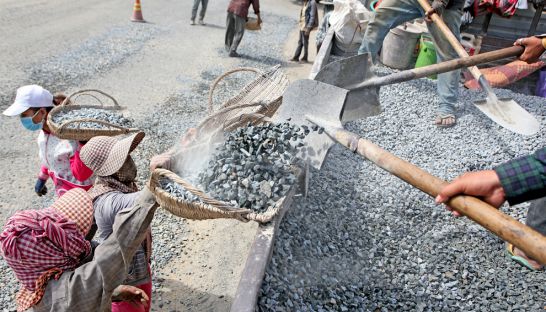Removing capital barriers for SMEs
Removing capital barriers for SMEs
FASMEC Microfinance, which opened its doors last month, was created by the Federation of Associations of Small and Medium Enterprise of Cambodia (FASMEC) as an independent entity to service the financing needs of the organisations’s members. The Post’s Sor Chandara sat down with FASMEC Microfinance’s president Te Taing Por to discuss how Cambodia’s 54th microfinance institution will separate itself from the pack, as well as governmental efforts to bring more formality to the small and medium enterprise sector.
Why did you decide to start FASMEC Microfinance?
We started this microfinance institution (MFI) to help small and medium enterprises (SMEs), especially those related to manufacturing operations. SMEs have faced challenges in the past when it comes to getting loans from other financial institutions.
We will focus on existing businesses that are looking to expand, as well as SME workers and students who would like to start their own business but have no capital.
What kind of challenges do SMEs face in accessing loans?
When MFIs request a loan, banks will demand to see their financial statements and previous loan history. We have eased these problems by requiring only small amounts of collateral, and in some cases, none at all.
We will screen the companies to understand why they want to borrow money and to ensure that they will not use it for something besides its stated purpose.
How are the loans you offer different from those provided by other MFIs?
Our interest rates are not that much different from other MFIs. However, most other MFIs require a person taking a loan in Phnom Penh to provide collateral from the same city, where as we will allow customers to use collateral from other provinces as well.
We do not review the customer’s business reports, but rather examine their business products.
How much starting capital do you have?
FASMEC Microfinance will loan prospective customer a maximum of 10 per cent of our operating capital. We started lending in September and currently have loaned out our initial capital of $1 million.
We hope to get additional capital and to have $3 million to $5 million by 2016.
In addition to providing loans to SMEs, what other assistance does your MFI provide?
We additionally offer student loans and loans to SME workers who want to run their own business but lack capital.
The interest rate is not high. We have not finalised the other conditions yet, but a committee will assess each individual business plan.
We will also provide instructions on how to manage a successful business and promote the SME sector.
What kind of returns does FASMEC Microfinance expect from this venture?
We are not thinking about profits. What we gain will be a positive image, confidence, and values that our society will recognise.
The government recently introduced the Industry Development Policy (IDP), which will push for SMEs to register and keep proper balance sheets.
How do you think this will affect the SME sector?
It will not affect SMEs. If all of them have a balance sheet, the market will see fair competition.
Registering them will not be a problem, but to manage their financial reports, enterprise owners must have basic knowledge in accounting or hire someone who does. Some entrepreneurs do not understand how to pay taxes, which will make them vulnerable. If SMEs have proper balance sheets then we can assist them with this.
With the IDP, do you see more SMEs getting into higher value-added manufacturing instead of the low-value manufacturing we currently see?
Step by step, we will get to it. In the past, we have exported raw materials, giving us zero value added. But, when we started to process the raw material within the country we were able to produce value-added products.
We need to supply local demand because there is a lot of it. Goods imported from Thailand and Vietnam into Cambodia are worth $4 billion. We need to encourage local production so that we import less.














